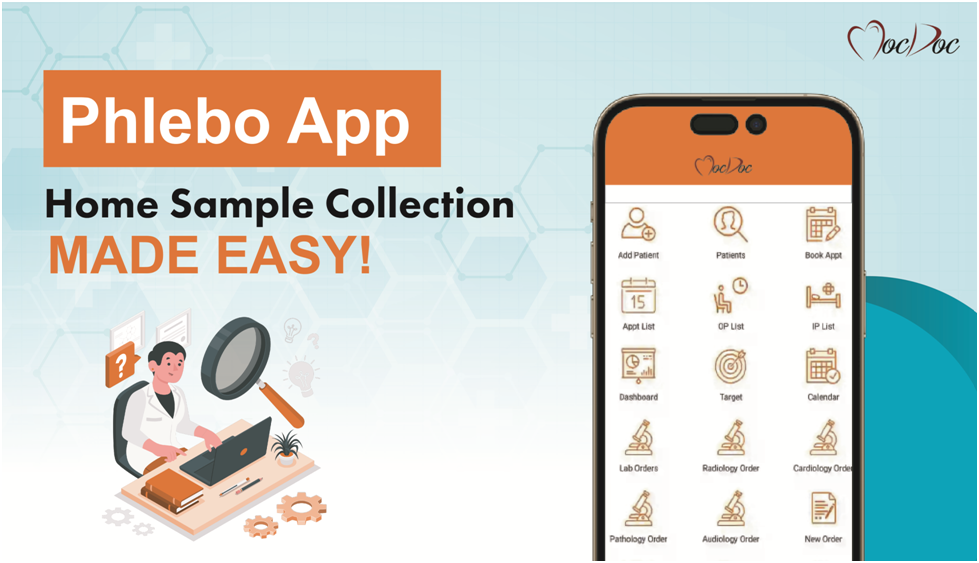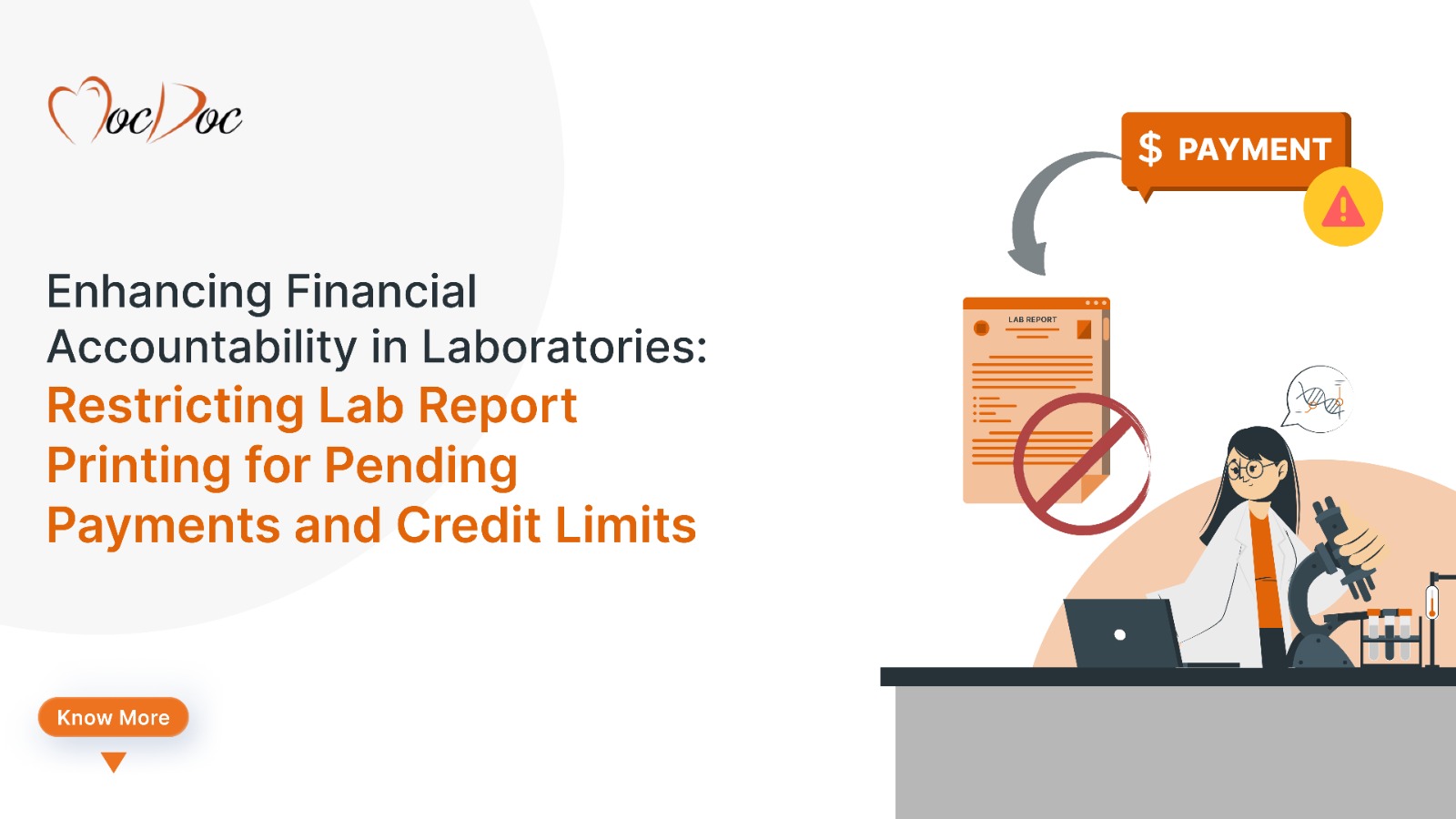2025102313:22:12
How LIMS and Barcodes Streamline Lab Sample Management
Published by: Mohammed Siddiq

How LIMS and Barcodes Streamline Lab Sample Management
Walking into a lab one busy Monday morning, we saw samples stacked high, printers buzzing, and technicians juggling tubes and test slips. One mislabeled tube that day set the workflow back nearly an hour.
That moment highlighted a key challenge: a single mistake in a lab does more than waste time; it can affect someone waiting for an answer about their health.
This is why tools like barcodes and LIMS (Laboratory Information Management System) have become the backbone of efficient labs. They may not look flashy, but they are essential for accuracy and speed.
What Exactly Is a LIMS?
A LIMS is a lab’s digital organiser, a system that keeps track of every patient, every test, and every result without the chaos of paper registers.
We have observed labs still using notebooks and spreadsheets, which require manual ID checks, hand-recorded results, and repeated data entry. That is hours of work a system like cloud-based LIMS software can handle in minutes. It centralises information, updates in real time, and works seamlessly across multiple branches. Essentially, it gives a lab a memory that never forgets.
Barcodes: The Unsung Heroes of the Lab
Barcodes may seem simple, just black lines on a sticker, but when applied to a sample tube, they give the sample a unique digital identity. When scanned, the system instantly identifies the patient and the required tests. There is no guesswork, no handwriting errors, and no confusion about which sample is which.
When integrated with a lab sample management software, a barcode follows a sample from collection to analyzer to report, with every step logged, traceable, and foolproof.
We have seen cases where a single barcode scan prevented a mix-up that could have affected an entire batch of results.
How the Two Work Together
Barcodes and LIMS are effective individually, but together they create a workflow that is simple, reliable, and efficient. Here is how a typical lab day unfolds:
- The technician collects a sample, enters details into MocDoc LIMS, and prints a barcode.
- The barcode is attached to the sample and scanned at each checkpoint.
- The analyzer reads the barcode, runs the test, and sends results directly back to the LIMS.
- Within minutes, the verified report is ready for email, SMS, or print for the patient.
No typing, no double entries, no confusion. Just a clean digital trail from start to finish.
The Big Win: Fewer Human Errors
Even highly skilled technicians can make simple mistakes. Writing the wrong ID, misplacing a tube, or mixing samples can disrupt the workflow. With barcodes and LIMS handling repetitive tasks, staff can focus on critical work: interpreting data and maintaining quality.
With barcoding in place:
• Every label is neat and machine-readable.
• Duplicate entries are flagged instantly.
• Data moves straight from machine to system without manual steps.
This not only speeds up processes but also improves safety, which is essential in any lab environment.
A Quick Story: Automation in Action
Before switching to MocDoc LIMS, one lab reported spending nearly two hours every evening tallying results and checking entries. After integrating barcode tracking and analyzer connectivity, that task now takes under 15 minutes.
The system reads results directly from the analyzer, matches them with the sample’s barcode, and updates everything automatically.
Staff can now leave on time, reports are delivered faster, and patients receive results without delay. This is technology working invisibly but indispensably.
Why This Shift Is Happening Everywhere
The benefits of LIMS and barcodes are not limited to large labs.
Small and mid-sized labs across India, Malaysia, and the Middle East are adopting platforms like MocDoc to simplify operations without large investments. A barcode-enabled LIMS setup helps labs:
• Avoid sample mix-ups.
• Remain compliant with audit and quality checks.
• Keep data secure in the cloud.
• Deliver faster results, earning patient trust.
In short, it enables labs to grow efficiently while supporting their staff.
Where It’s All Headed
The future of labs is not about replacing people with machines. It is about connecting every step of the workflow so staff can perform their roles better.
Barcodes organize samples. LIMS provides full visibility. Together, they allow labs to operate smoothly and focus on what matters most: helping people get answers faster.
For labs still relying on paper logs or spreadsheets, exploring a system like MocDoc LIMS can bring efficiency, accuracy, and peace of mind. Book a demo or learn more here to see it in action.
Complex machine integrati...
Save time on complex machines at your lab with MocDoc’s labor.....
Published by: Rithika S
2025101608:56:50
Making Home Sample Collec...
The need for home collection of samples has become increasing.....
Published by: Preethi
2025101608:55:27
10 Signs You Should Inves...
The rise of new technologies has made the volume of data dras.....
Published by: Sanjana
2025101609:03:11
Enhancing Financial Accou...
In a laboratory setting, maintaining financial accountability.....
Published by: Mohammed Siddiq
2025101517:26:24






